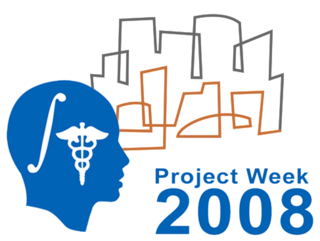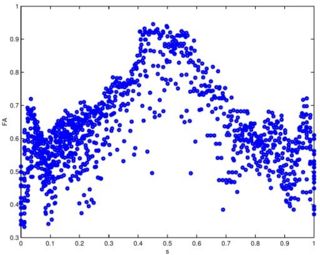NA-MIC/Projects/Collaboration/UWA-Perth
 Return to Project Week Main Page |
Instructions for Use of this Template
- Please create a new wiki page with an appropriate title for your project using the convention NA-MIC/Projects/Theme-Name/Project-Name
- Copy the entire text of this page into the page created above
- Link the created page into the list of projects for the project event
- Delete this section from the created page
- Send an email to tkapur at bwh.harvard.edu if you are stuck
Key Investigators
- Prof. Karol Miller (kmiller@mech.uwa.edu.au), Dr Adam Wittek, Grand Joldes
Objective
The Intelligent Systems of Medicine Laboratory (ISML) mission is to work towards improving clinical outcomes through appropriate use of technology. We are interested in biomechanics (both engineering biomechanics and sport biomechanics), biomedical engineering, computer integrated surgery, medical robotics and related fields. We run exciting research projects in these areas, generously funded by The Australian Research Council and other agencies.
Approach, Plan
We intend to contribute to Na-MIC by providing algorithms for computing the intra-operative brain deformations for image-guided neurosurgery. We treat the brain shift as a continuum mechanics problem involving finite deformations and solve it using non-linear finite element procedures. We use the procedures (non-linear explicit dynamics with Total Lagrangian formulation) that do not require iterations even when applied to non-linear problems and are, therefore, amenable to computing the intra-operative brain deformations in real time (under 150 s) on a standard PC.
Progress
References
- [1] Miller, K., Joldes, G., Lance, D., Wittek, A. (2007) Total Lagrangian explicit dynamics finite element algorithm for computing soft tissue deformation, Communications in Numerical Methods in Engineering. Vol. 23, pp. 121-134, doi: 10.1002/cnm.887, available on-line at http://www.sciencedirect.com/.
- [2] Wittek, A., Miller, K., Kikinis, R., Warfield, S. K. (2007) Patient-specific model of brain deformation: Application to medical image registration. Journal of Biomechanics. Vol. 40, pp. 919-929, DOI:10.1016/j.jbiomech.2006.02.021, available on-line at link title.
- [3] Joldes, G. R., Wittek, A., Miller, K. (2007) Suite of finite element algorithms for accurate computation of soft tissue deformation for surgical simulation, in Proceedings of Computational Biomechanics for Medicine Workshop, International Conference on Medical Image Computing and Computer-Assisted Intervention MICCAI 2007, Brisbane, Australia, ISBN 13: 978 0 643 09517 5, pp. 65-73.
- [4] Hawkins, T., Wittek, A. and Miller, K. (2006) Comparison of constitutive models of brain tissue for non-rigid image registration, in CD Proceedings of 2nd Workshop on Computer Assisted Diagnosis and Surgery, Santiago, Chile, 4 pages.
- [5] Horton, A., Wittek, A. and K. Miller (2006) Computer simulation of brain shift using an element free Galerkin method, in CD Proceedings of 7th International Symposium on Computer Methods in Biomechanics and Biomedical Engineering CMBBE 2006, Antibes, France, ISBN: 0-9549670-2-X, pp. 906-911.
- [6] Horton, A., Wittek, A. and K. Miller (2006) Towards meshless methods for surgery simulation. Linear versus non-linear computation of the brain shift, in Proceedings of Computational Biomechanics for Medicine Workshop, International Conference on Medical Image Computing and Computer-Assisted Intervention MICCAI 2006, Copenhagen, Denmark, ISBN 10: 87-7611-149-0, pp. 32-40 link title.
- [7] Joldes, G., Wittek, A. and Miller, K. (2006) Improved linear tetrahedral element for surgery simulation, in Proceedings of Computational Biomechanics for Medicine Workshop, International Conference on Medical Image Computing and Computer-Assisted Intervention MICCAI 2006, Copenhagen, Denmark, ISBN 10: 87-7611-149-0, pp. 52-63 publications.htm link title.
- [8] Joldes, G., Wittek, A. and Miller, K. (2006) Towards non-linear finite element, computations in real time, in CD Proceedings of 7th International Symposium on Computer Methods in Biomechanics and Biomedical Engineering CMBBE 2006, Antibes, France, ISBN: 0-9549670-2-X, pp. 894-899.
- [9] Miller, K., Joldes, G. and Wittek, A. (2006) New finite element algorithm for surgical simulation, in CD Proceedings of 2nd Workshop on Computer Assisted Diagnosis and Surgery, Santiago, Chile, 4 pages
- [10] Miller, K. Hawkins, T. and Wittek, A. (2006) Linear versus non-linear computation of the brain shift, in CD Proceedings of the 7th International Symposium on Computer Methods in Biomechanics and Biomedical Engineering CMBBE 2006, Antibes, France, ISBN: 0-9549670-2-X, pp. 888-893.
- [11] Miller, K. and Wittek, A. (2006) Neuroimage registration as displacement - zero traction problem of solid mechanics, Lead Lecture in Proceedings of Computational Biomechanics for Medicine Workshop, International Conference on Medical Image Computing and Computer-Assisted Intervention MICCAI 2006, Copenhagen, Denmark, ISBN 10: 87-7611-149-0, pp. 1-12 publications.htm link title.
- [12] Wittek, A., Kikinis, K., Warfield, S. K., and Miller, K. (2005) Brain shift computation using a fully nonlinear biomechanical model, in Proceedings of 8th International Conference on Medical Image Computing and Computer Assisted Intervention MICCAI 2005 in Lecture Notes in Computer Science 3750 2006, pp. 583-590.
In Press
- [13] AWittek, A., T. Hawkins, and Miller, K. (2008). On the unimportance of constitutive models in computing brain deformation for image-guided surgery (in press). Biomechanics and Modeling in Mechanobiology: 8 pages, doi: 10.1007/s10237-008-0118-1, Springer.
- [14] Grand Joldes, Karol Miller and Adam Wittek (2007) Efficient hourglass control implementation for an uniform strain hexahedra using Total Lagrangian formulation. Communications in Numerical Methods in Engineering (accepted in June 2007), 9 pages, doi: 10.1002/cnm.1034, Wiley.
Text from Adam's Previous Page
Back to NA-MIC_Collaborations, Site1 Algorithms, Site2 DBP 1
= Computing the Brain Deformation for Image-Guided Neurosurgery (The Intelligent Systems of Medicine Laboratory link title School of Mechanical Engineering, The University of Western Australia)=
Description
The Intelligent Systems of Medicine Laboratory (ISML) mission is to work towards improving clinical outcomes through appropriate use of technology. We are interested in biomechanics (both engineering biomechanics and sport biomechanics), biomedical engineering, computer integrated surgery, medical robotics and related fields. We run exciting research projects in these areas, generously funded by The Australian Research Council and other agencies.
We intend to contribute to Na-MIC by providing algorithms for computing the intra-operative brain deformations for image-guided neurosurgery. We treat the brain shift as a continuum mechanics problem involving finite deformations and solve it using non-linear finite element procedures. We use the procedures (non-linear explicit dynamics with Total Lagrangian formulation) that do not require iterations even when applied to non-linear problems and are, therefore, amenable to computing the intra-operative brain deformations in real time (under 150 s) on a standard PC.
Key Investigators
- Prof. Karol Miller (kmiller@mech.uwa.edu.au), Dr Adam Wittek, Grand Joldes
Publications link title
- [1] Miller, K., Joldes, G., Lance, D., Wittek, A. (2007) Total Lagrangian explicit dynamics finite element algorithm for computing soft tissue deformation, Communications in Numerical Methods in Engineering. Vol. 23, pp. 121-134, doi: 10.1002/cnm.887, available on-line at link title.
- [2] Wittek, A., Miller, K., Kikinis, R., Warfield, S. K. (2007) Patient-specific model of brain deformation: Application to medical image registration. Journal of Biomechanics. Vol. 40, pp. 919-929, DOI:10.1016/j.jbiomech.2006.02.021, available on-line at link title.
- [3] Joldes, G. R., Wittek, A., Miller, K. (2007) Suite of finite element algorithms for accurate computation of soft tissue deformation for surgical simulation, in Proceedings of Computational Biomechanics for Medicine Workshop, International Conference on Medical Image Computing and Computer-Assisted Intervention MICCAI 2007, Brisbane, Australia, ISBN 13: 978 0 643 09517 5, pp. 65-73.
- [4] Hawkins, T., Wittek, A. and Miller, K. (2006) Comparison of constitutive models of brain tissue for non-rigid image registration, in CD Proceedings of 2nd Workshop on Computer Assisted Diagnosis and Surgery, Santiago, Chile, 4 pages.
- [5] Horton, A., Wittek, A. and K. Miller (2006) Computer simulation of brain shift using an element free Galerkin method, in CD Proceedings of 7th International Symposium on Computer Methods in Biomechanics and Biomedical Engineering CMBBE 2006, Antibes, France, ISBN: 0-9549670-2-X, pp. 906-911.
- [6] Horton, A., Wittek, A. and K. Miller (2006) Towards meshless methods for surgery simulation. Linear versus non-linear computation of the brain shift, in Proceedings of Computational Biomechanics for Medicine Workshop, International Conference on Medical Image Computing and Computer-Assisted Intervention MICCAI 2006, Copenhagen, Denmark, ISBN 10: 87-7611-149-0, pp. 32-40 link title.
- [7] Joldes, G., Wittek, A. and Miller, K. (2006) Improved linear tetrahedral element for surgery simulation, in Proceedings of Computational Biomechanics for Medicine Workshop, International Conference on Medical Image Computing and Computer-Assisted Intervention MICCAI 2006, Copenhagen, Denmark, ISBN 10: 87-7611-149-0, pp. 52-63 publications.htm link title.
- [8] Joldes, G., Wittek, A. and Miller, K. (2006) Towards non-linear finite element, computations in real time, in CD Proceedings of 7th International Symposium on Computer Methods in Biomechanics and Biomedical Engineering CMBBE 2006, Antibes, France, ISBN: 0-9549670-2-X, pp. 894-899.
- [9] Miller, K., Joldes, G. and Wittek, A. (2006) New finite element algorithm for surgical simulation, in CD Proceedings of 2nd Workshop on Computer Assisted Diagnosis and Surgery, Santiago, Chile, 4 pages
- [10] Miller, K. Hawkins, T. and Wittek, A. (2006) Linear versus non-linear computation of the brain shift, in CD Proceedings of the 7th International Symposium on Computer Methods in Biomechanics and Biomedical Engineering CMBBE 2006, Antibes, France, ISBN: 0-9549670-2-X, pp. 888-893.
- [11] Miller, K. and Wittek, A. (2006) Neuroimage registration as displacement - zero traction problem of solid mechanics, Lead Lecture in Proceedings of Computational Biomechanics for Medicine Workshop, International Conference on Medical Image Computing and Computer-Assisted Intervention MICCAI 2006, Copenhagen, Denmark, ISBN 10: 87-7611-149-0, pp. 1-12 publications.htm link title.
- [12] Wittek, A., Kikinis, K., Warfield, S. K., and Miller, K. (2005) Brain shift computation using a fully nonlinear biomechanical model, in Proceedings of 8th International Conference on Medical Image Computing and Computer Assisted Intervention MICCAI 2005 in Lecture Notes in Computer Science 3750 2006, pp. 583-590.
In Press
- [13] AWittek, A., T. Hawkins, and Miller, K. (2008). On the unimportance of constitutive models in computing brain deformation for image-guided surgery (in press). Biomechanics and Modeling in Mechanobiology: 8 pages, doi: 10.1007/s10237-008-0118-1, Springer.
- [14] Grand Joldes, Karol Miller and Adam Wittek (2007) Efficient hourglass control implementation for an uniform strain hexahedra using Total Lagrangian formulation. Communications in Numerical Methods in Engineering (accepted in June 2007), 9 pages, doi: 10.1002/cnm.1034, Wiley.
Links
- Link1
- Link2
Project Week Results: Jan 2006, Jun 2007

